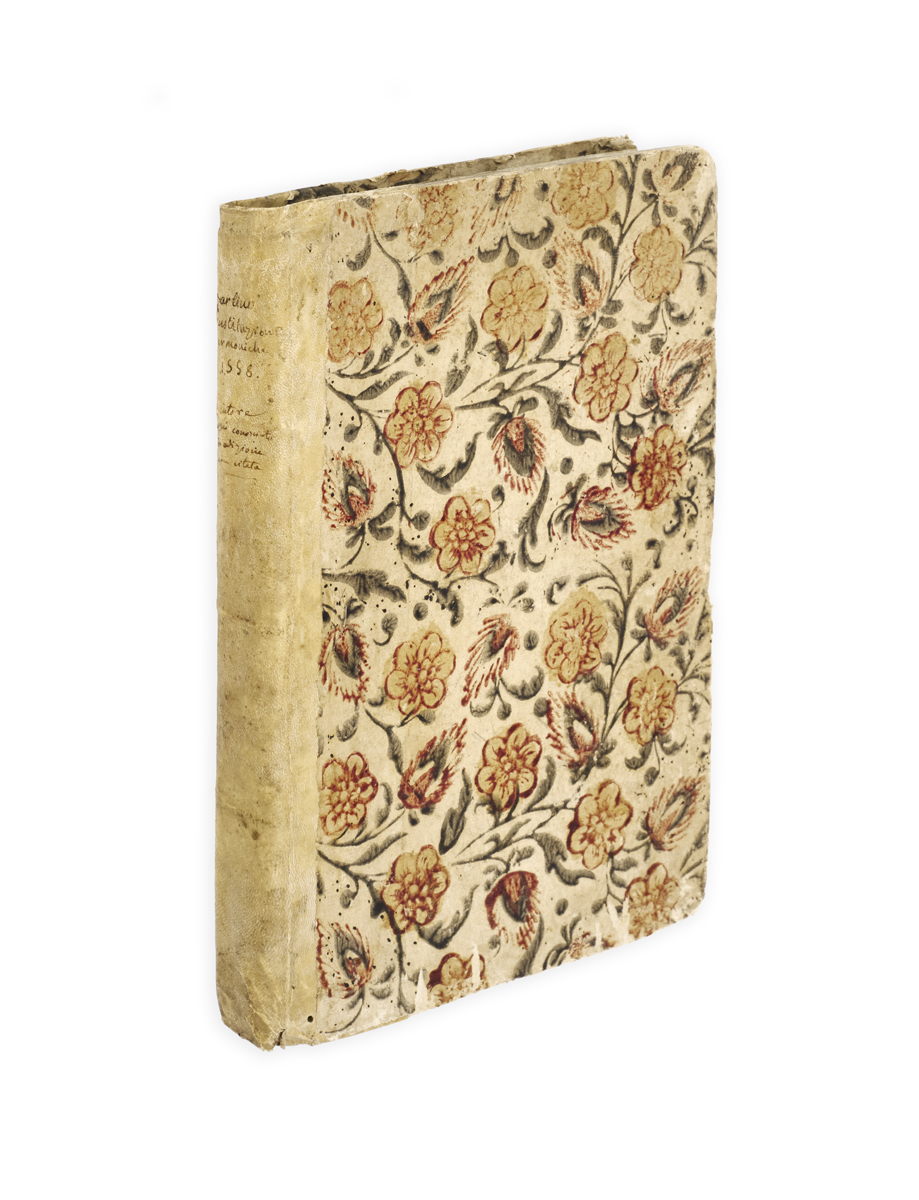
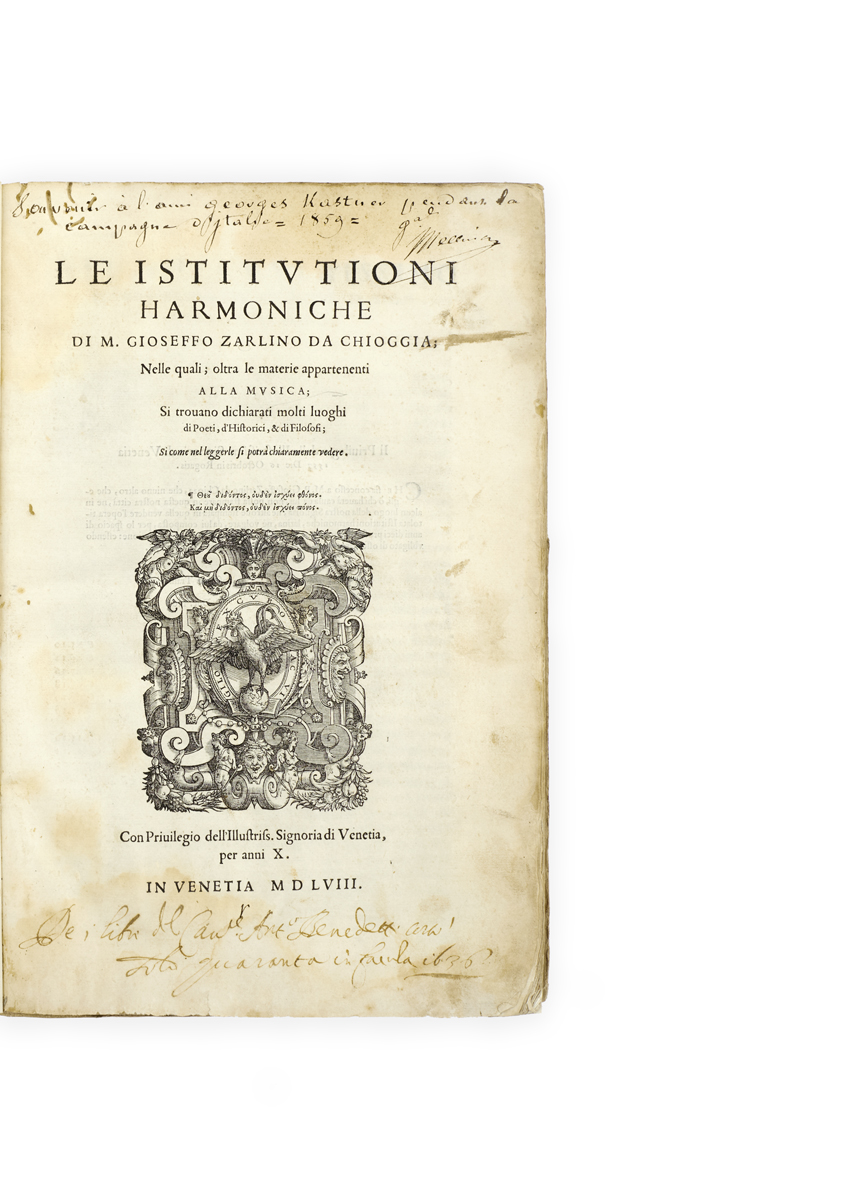
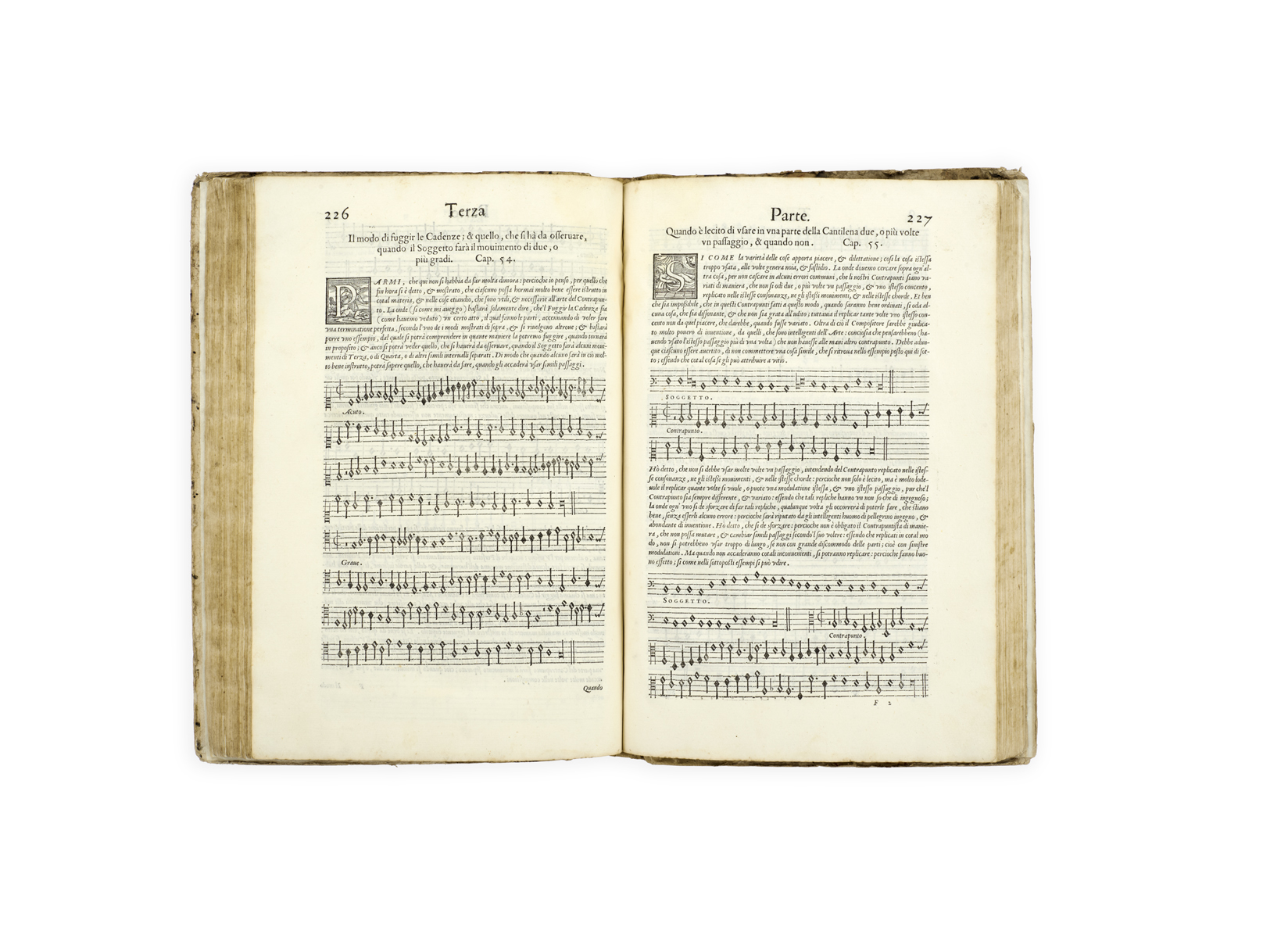
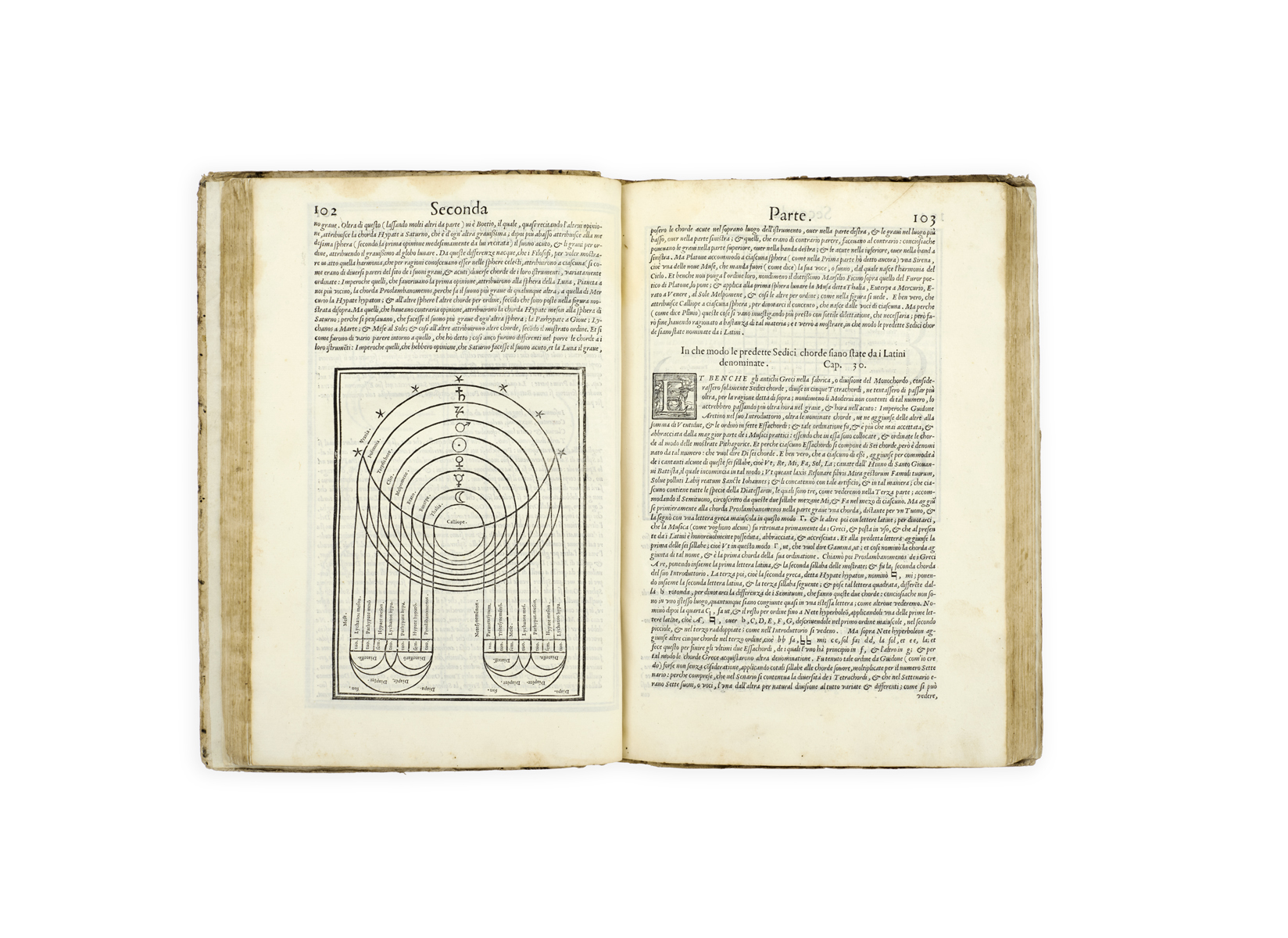
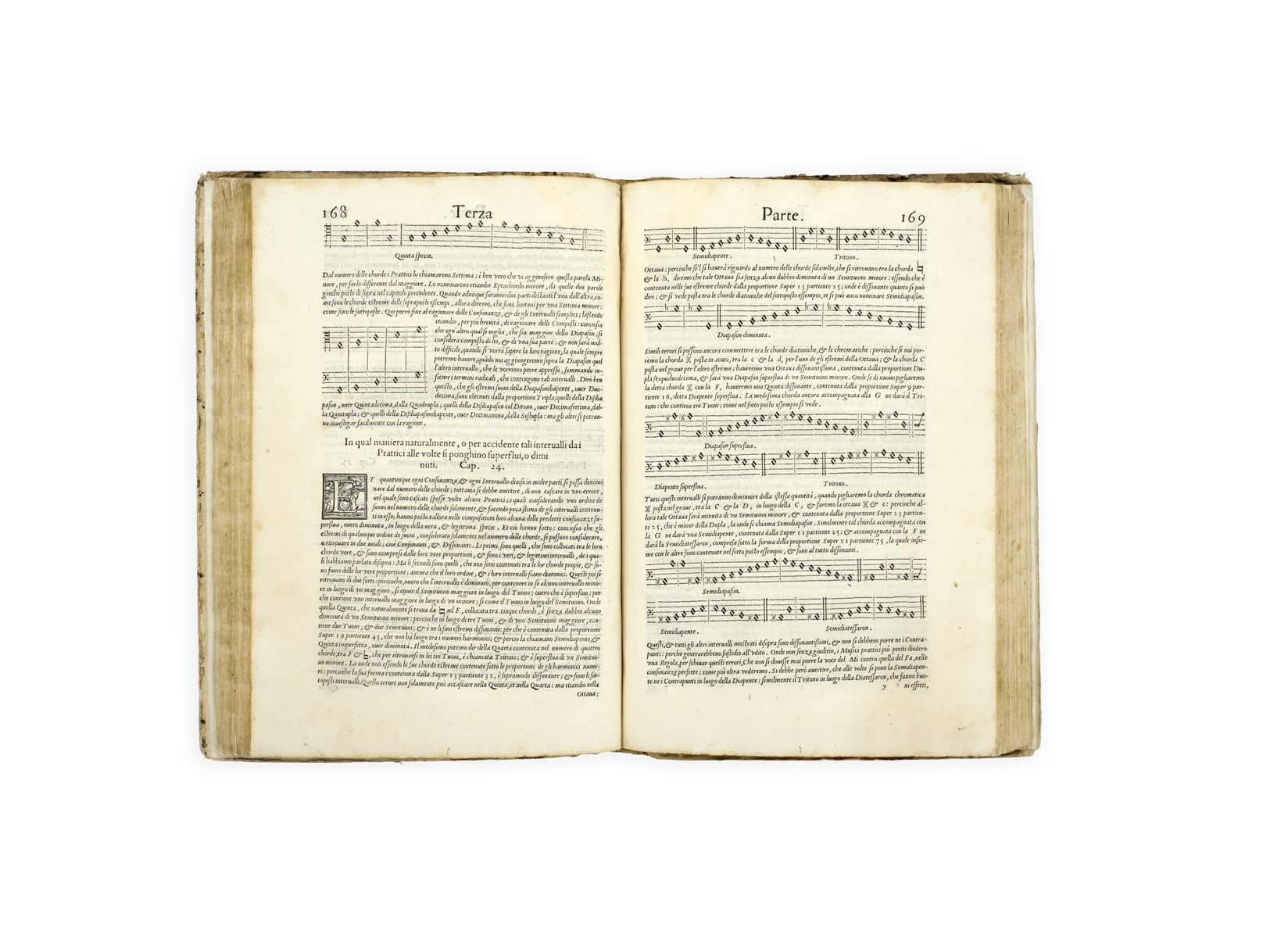
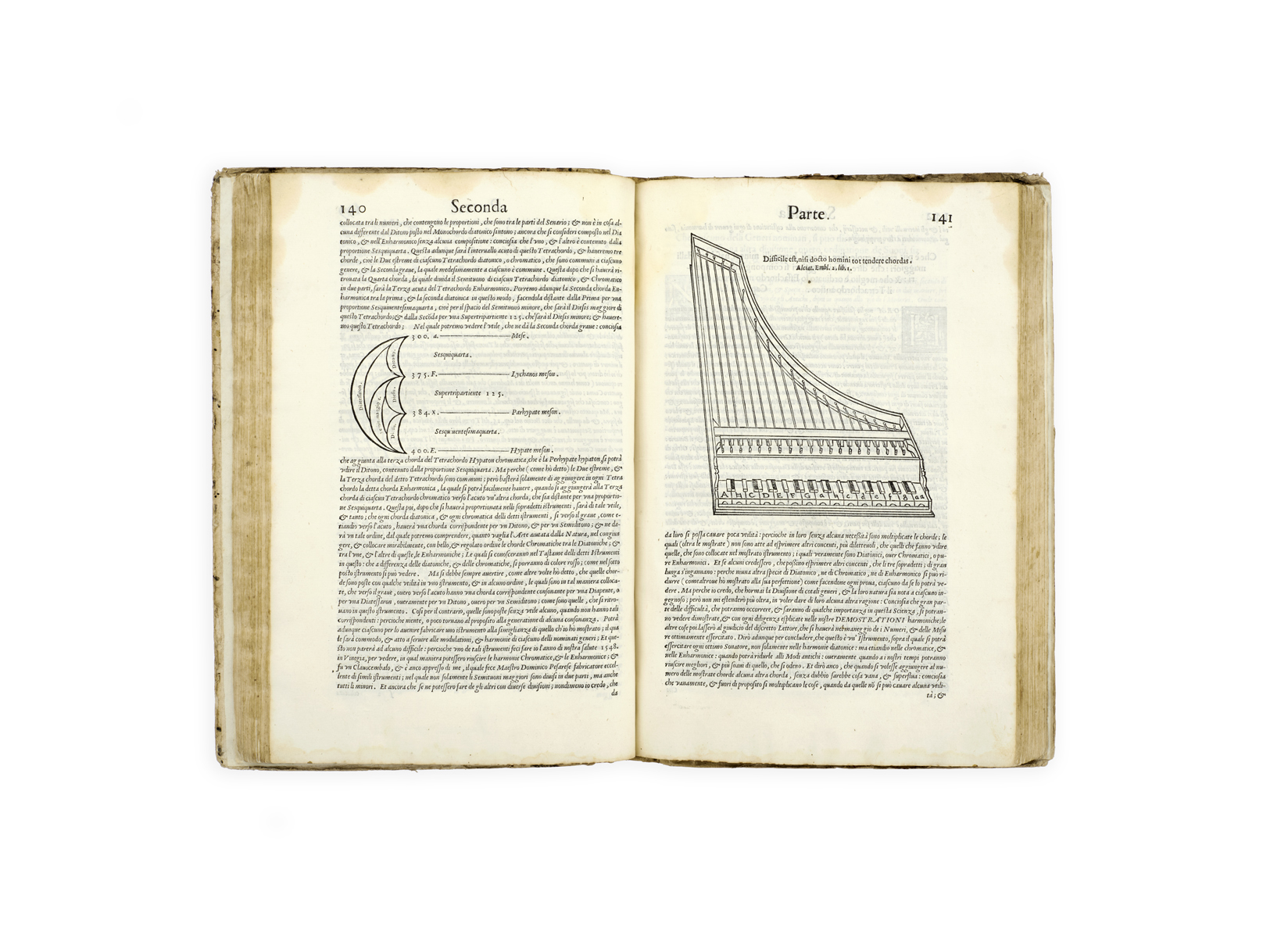
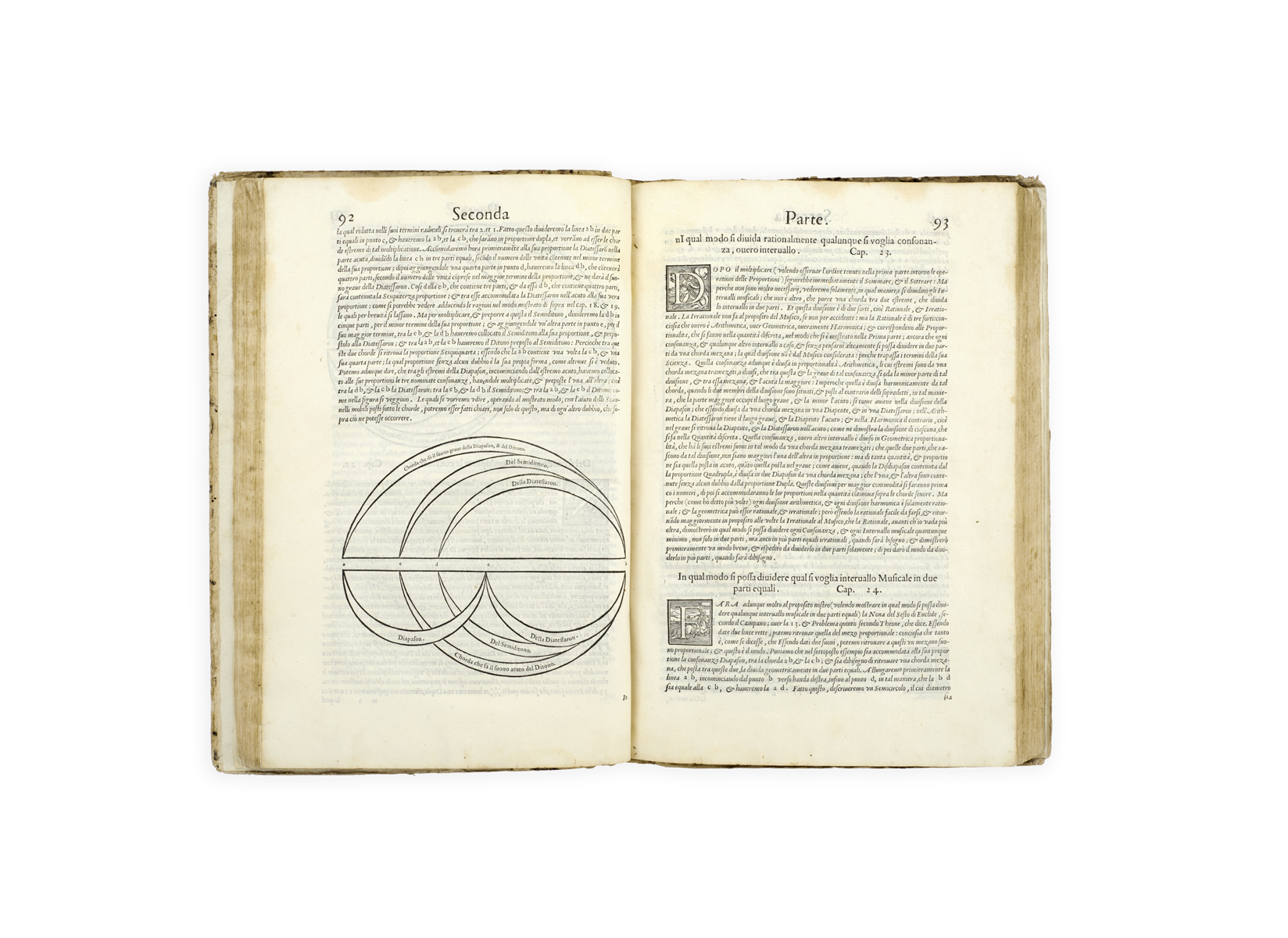
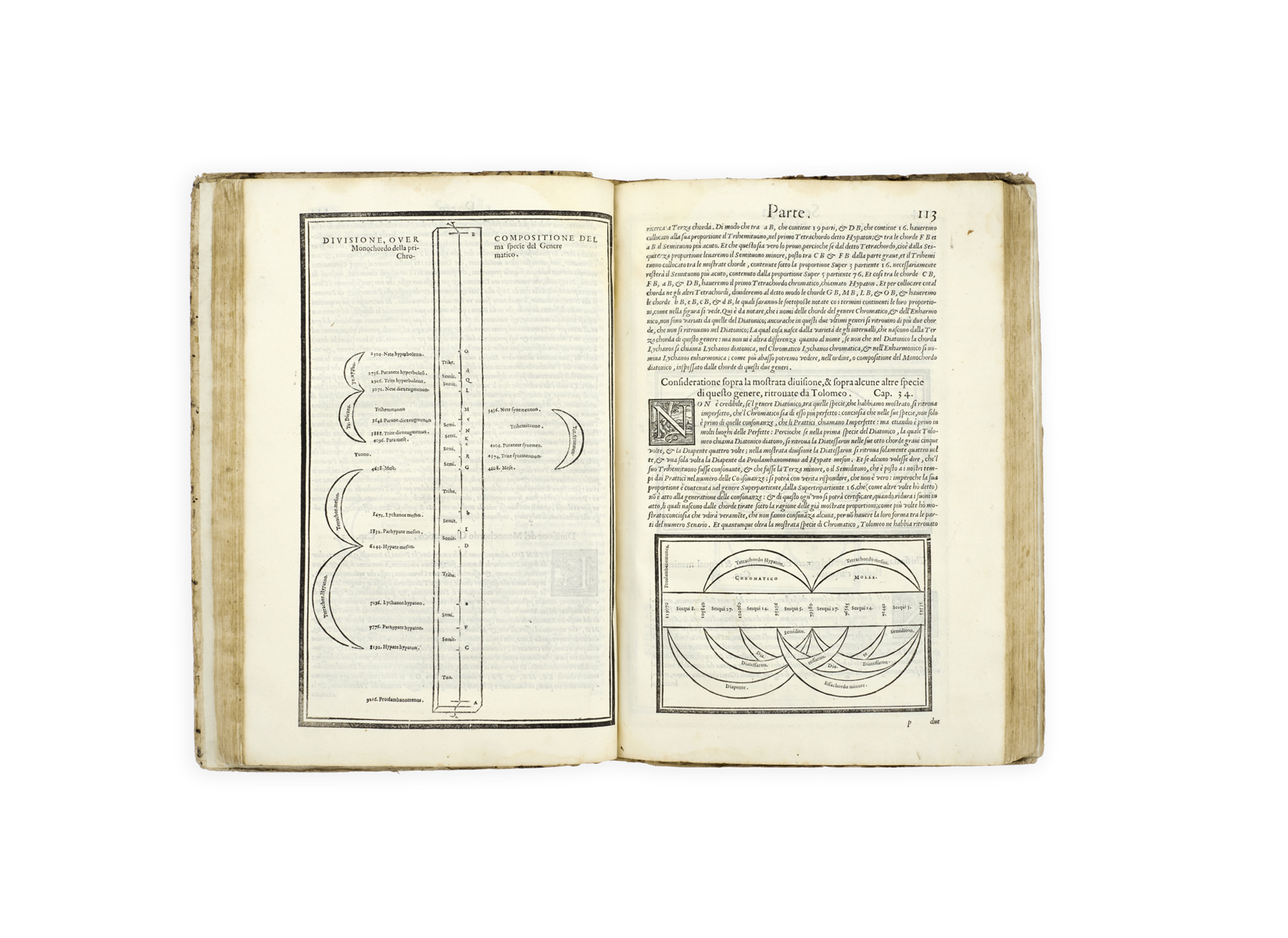
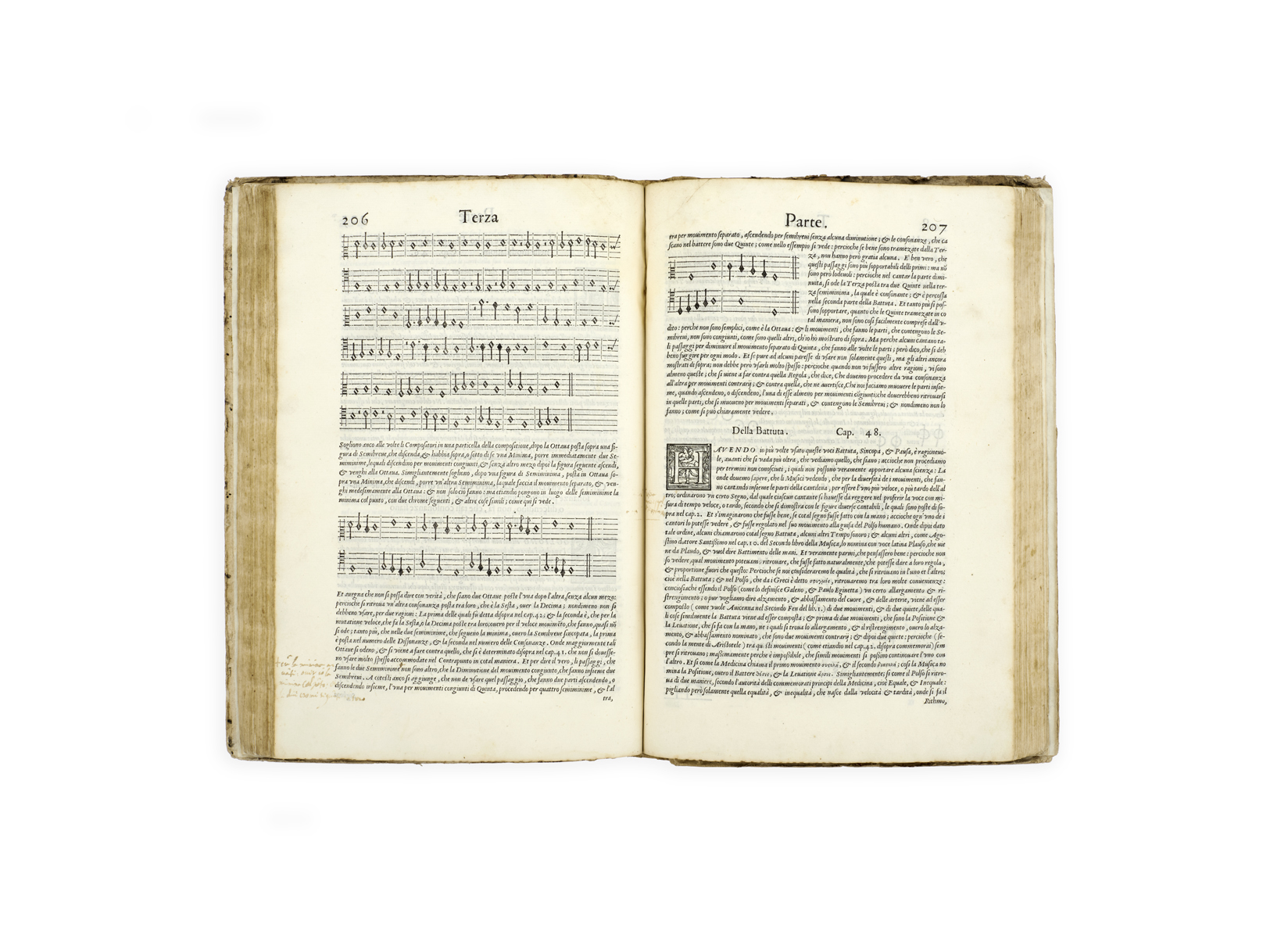
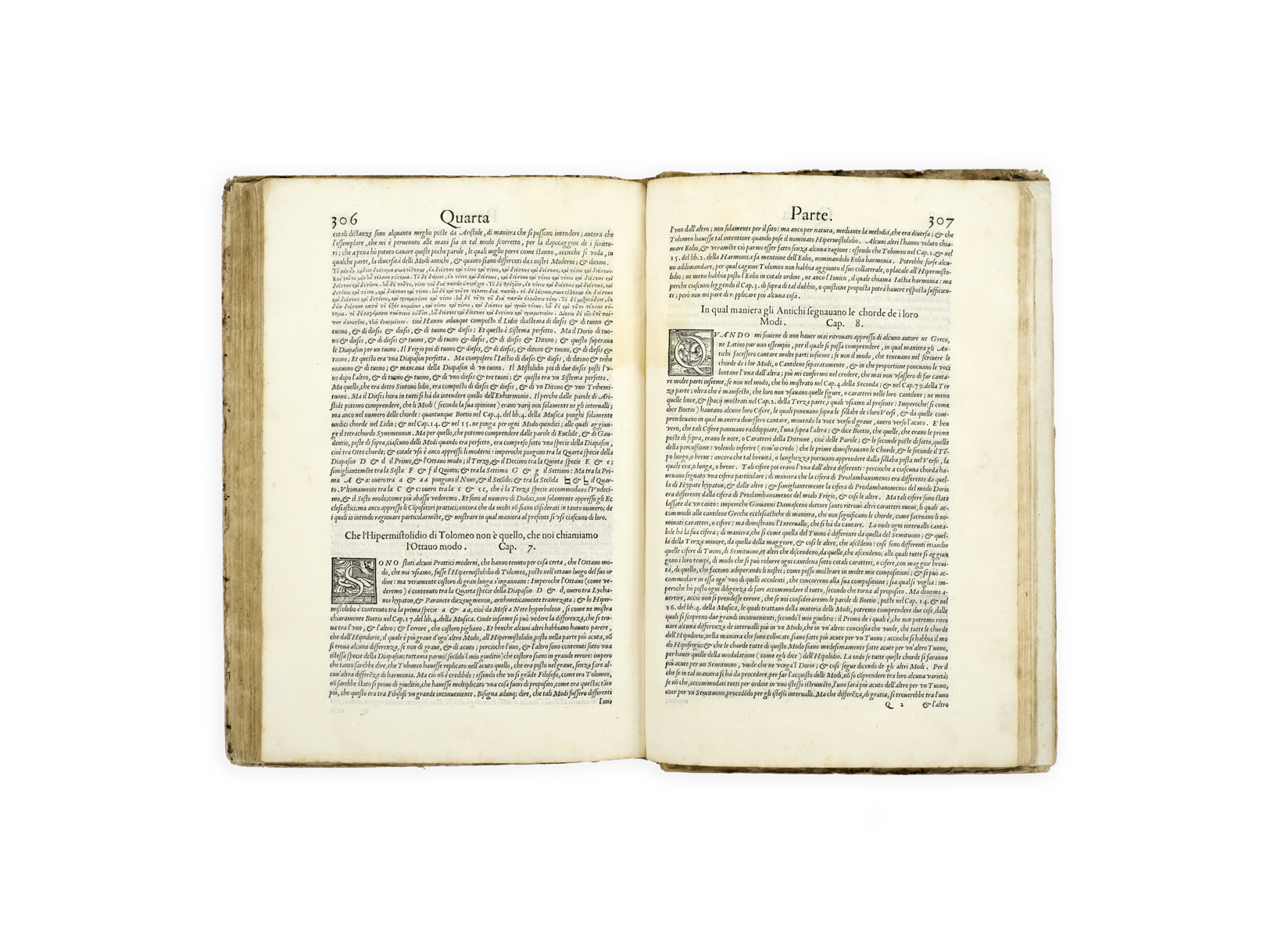
ZARLINO, Gioseffo.
Le Istitutioni harmoniche … nelle quali; oltra le materie appartenenti alla musica; si trovano dichiarati molti luoghi di Poeti, d’Historici, & di Filosofi…
Venice, [Pietro da Fino], 1558.
Folio, pp. [12], 347, [1]; woodcut publisher’s device to title-page; woodcut initials, woodcut diagrams in parts I and II, woodcut music in parts III and IV; damp-stains to foot of first third of text and to head towards the end, short wormtracks to blank upper margin of first three leaves, upper outer corner of the last leaf restored; withal a good copy in eighteenth-century quarter vellum and paper boards, block-printed in red, black and ochre in a floral pattern; ownership inscription ‘De i libri del Cave Anto Benedetti’ dated 1636 to the foot of the title-page; presentation inscription to head of title from the bibliophile, musician and soldier General Émile Mellinet (1798–1894) to the composer and musicologist Jean-Georges Kastner (1810–1867).

Added to your basket:
Le Istitutioni harmoniche … nelle quali; oltra le materie appartenenti alla musica; si trovano dichiarati molti luoghi di Poeti, d’Historici, & di Filosofi…
First edition, rare, of ‘arguably the most important and influential book in the history of music theory … [It] opened the way for the new tonality which has governed music from the seventeenth century to the present day’ (PMM).
‘Le istitutioni harmoniche (1558) is one of the most important works of music theory. Zarlino [1517–1590] aimed in it to unite speculative theory with the practice of composition on the grounds that “music considered in its ultimate perfection contains these two parts so closely joined that one cannot be separated from the other” (i, 2). The composer must not be content to master his craft; he should know the reason for what he does, and this can be discovered through an alliance of the rational and sensory faculties. The first two parts (they are designated “books” in the 1573 edition) present the traditional curriculum of musica theorica from a fresh viewpoint. In part I Zarlino reviewed the philosophical, cosmological, and mathematical basis of music. Part II sets forth the Greek tonal system and supplants it with a modern theory of consonances and tuning … Zarlino acknowledged that the numerical criteria that he established in parts I and II for the tuning of the consonances did not apply to instrumental music, which employed artificial tunings made necessary by the imperfection of instruments. But in the natural medium of the voice it was possible, he maintained, to realize all the inherent perfection of harmony’ (Grove online).
Zarlino’s rules of counterpoint had wide influence across Europe, but his theoretical foundations were quickly challenged, first by Giovanni Battista Benedetti, and then by Vincenzo Galileo, whose Dialogo (1581) ‘pointed out numerous instances in which Zarlino had misunderstood his ancient sources. Zarlino replied at great length in his Sopplimenti musicali (1588), in which he displayed much greater penetration into the ancient authors, particularly Aristoxenus and Ptolemy … than in Le istitutioni harmoniche; but he failed to refute Galilei’s valid criticisms’ (ibid.).
Provenance: General Mellinet inscribed this copy ‘à l’ami Georges Kastner … pendant la campagne d’Italie – 1859’. The Second Italian War of Independence was fought in that year between the Second Empire, with the Kingdom of Sardinia, and the Austrian Empire, and helped pave the way towards Italian unification. Kastner published several works on military music (at least one mentioning Mellinet) and both were friends with Adolphe Sax.
Printing and the Mind of Man 81; Eitner X 331-332; Gregory & Bartlett 296; Graesse VIII 508; Grove 20-646.